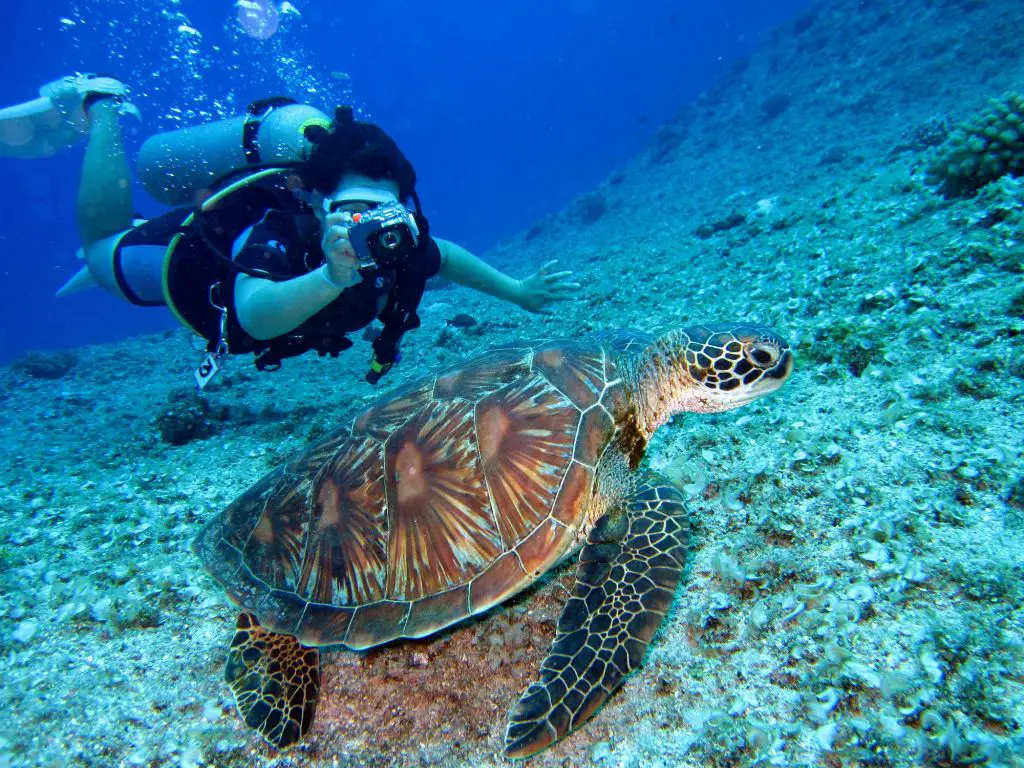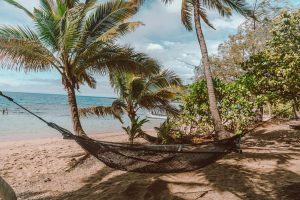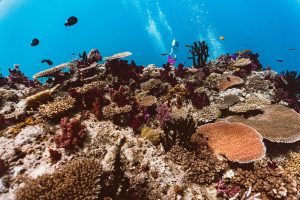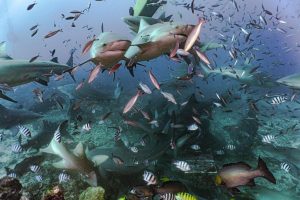The Bahamas are a diver’s paradise. An archipelago of 700 islands located at the meeting point of the Western Atlantic Ocean and the Caribbean Sea, the Bahamas offer a diving experience like no other. With a huge range of marine biodiversity, along with some of the more unusual dive environments in the world, it is no wonder that the Bahamas are so well-regarded in the diving industry. From blue holes and shipwrecks to barrier reefs and sharks, visiting the islands is a bucket list adventure not to be missed.
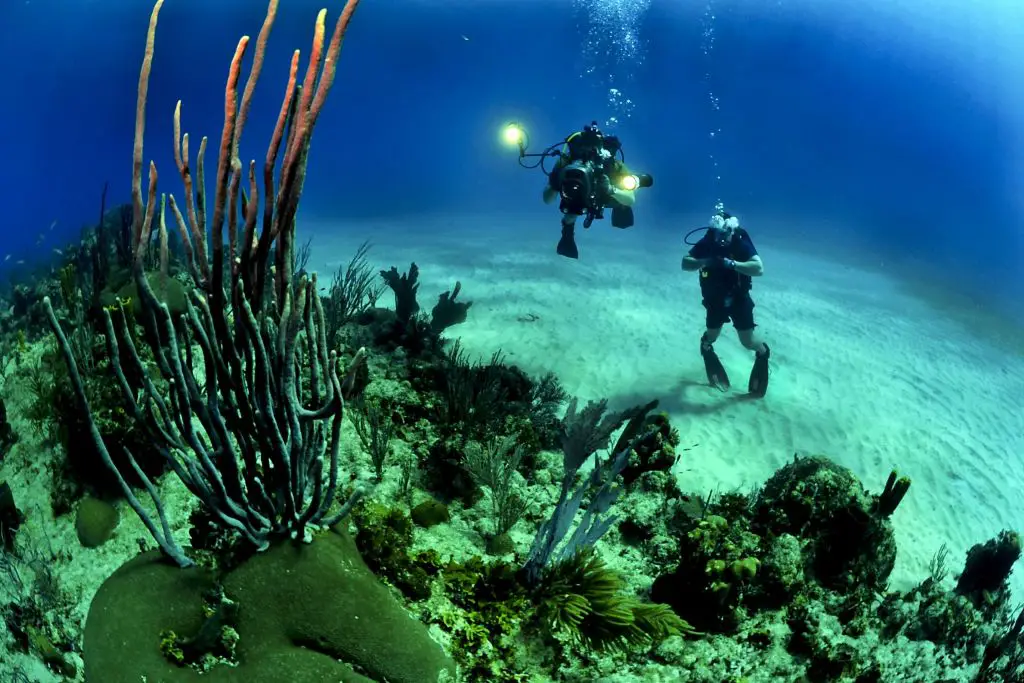
Whether you’re looking to become a divemaster or you just want to kick back and enjoy the subtropical climate and reliable dive conditions, the Bahamas has everything you need and more. Here is the ultimate guide to getting your dive on in Bahamian paradise.
WHEN TO GO
The beautifully balmy climate of the Bahamas makes them an ideal diving destination for most of the year, but to really get the most out of your trip it is worth giving it a miss between June to October. 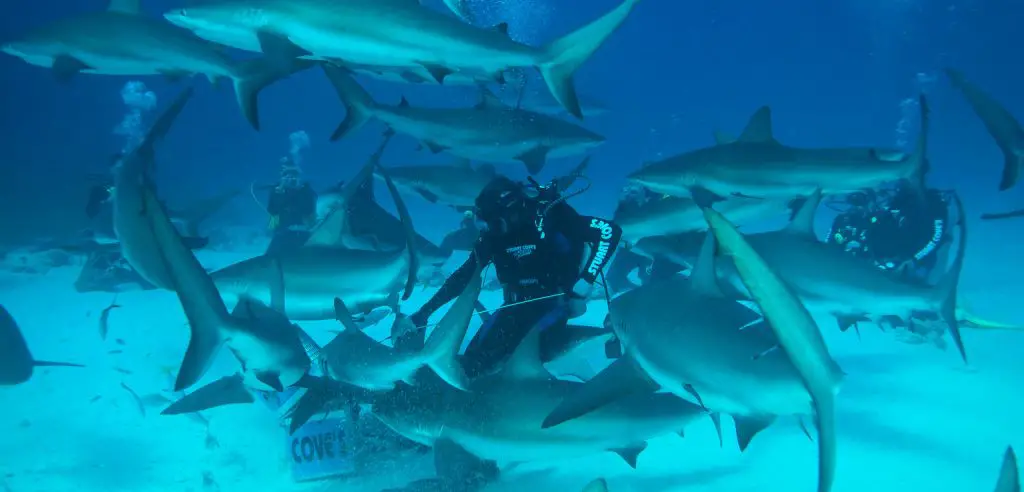
That’s because this particular time period is hurricane season. Although it usually only rains once a day from June to October, the chances of extreme weather are much higher, so dive conditions can often be less than ideal. However, if you prefer low season with its uncrowded dive sites and the bargains that usually come with it, then just make sure you take out travel insurance!
If you’re looking to add some adrenaline to your holiday with some shark diving, then the best time to visit is the dry season, which is November to May. From October to January tiger sharks can be found at Tiger Beach, while hammerhead sharks are present at Bimini from December to March. This season is much busier, so booking in advance is essential.
WHERE TO GO
With so many dive sites to choose from, the only trouble you’ll have is choosing which ones to visit first. The Bahamas island chain is comprised of 2,400 cays stretched out over 760 miles. The biggest group of islands are known as the Main islands and are home to 80% of the islands’ full-time residents as well as most of the places for tourists to stay.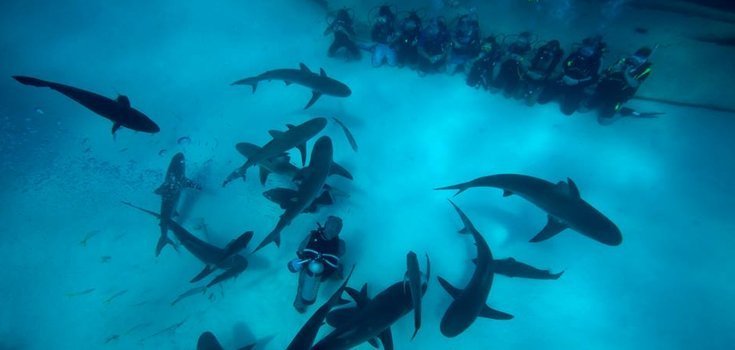
If it is awe-inspiring coral reefs you’re after, then you can’t go wrong with a trip to The Towers, a dive site in the Abacos. Here you can see enormous coral pinnacles that reach over 18 meters in height, surrounded by schools of brightly coloured fish, turtles, and rays. It’s easy to explore the myriad of tunnels and caves here which is what makes it such a hit with divers.
The Exumas Land and Sea Park is home to another stunning reef known as Jeep Reef, so named because of the sunken jeep covered in colourful corals.
For those times when you want to explore, the numerous shipwrecks around the islands are perfect. Head to the James Bond Wrecks in New Providence and relive the adventures of 007 by diving the Vulcan Bomber and the Tears of Allah.
There is also the four-masted sailing ship known as the Sugar Wreck in Grand Bahama which sank along with its sugar cargo during a hurricane in the late 1800s.
The Great Blue Hole in Andros is the second deepest blue hole in the Bahamas and is perfect for freediving. For more experienced divers who want to experience the serenity of drift diving then the Bimini Wall in Bimini is ideal for spotting large pelagic species.
WHAT TO LOOK FOR
The combination of the Atlantic and Caribbean Seas along with the mixture of shallow and deep waters make the Bahamas the perfect place to see a wide range of marine life. There are a few things to keep an eye out for, though. 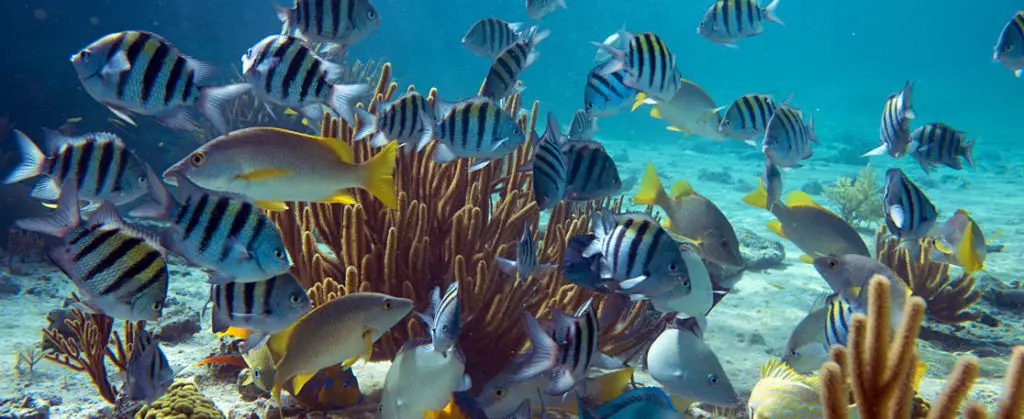
- Turtles
Super common in the Bahamas, Green, Hawksbill, and Loggerhead turtles are well known for swimming around the islands.
- Dolphins
The common bottlenose and the less common Atlantic spotted dolphins are often spotted around dive sites and sometimes even approach divers.
- Whales
A relatively common sight during the warmer months, several types of whale can be seen on dives here. Look out for humpbacks, Sperm whales, Minke whales and Pilot whales.
- Nassau Grouper
Commonly spotted around Nassau, the Nassau Grouper have their spawning season during January – February and divers can witness hundreds of these large fish at this time.
- Sharks
You can’t go to the Bahamas without trying to see a shark or two. Depending on where you go, Caribbean Reef sharks and the Oceanic White Tip are relatively common sights, as are Bull sharks, Lemon sharks, Hammerheads and Tiger sharks.
- Queen Conch
Conch is one of the staple foods of the Bahamas, so spotting them in their natural habitat is one way to really experience the islands.
However you choose to spend your diving holiday in the Bahamas, one thing is for sure – you will have the experience of a lifetime!



